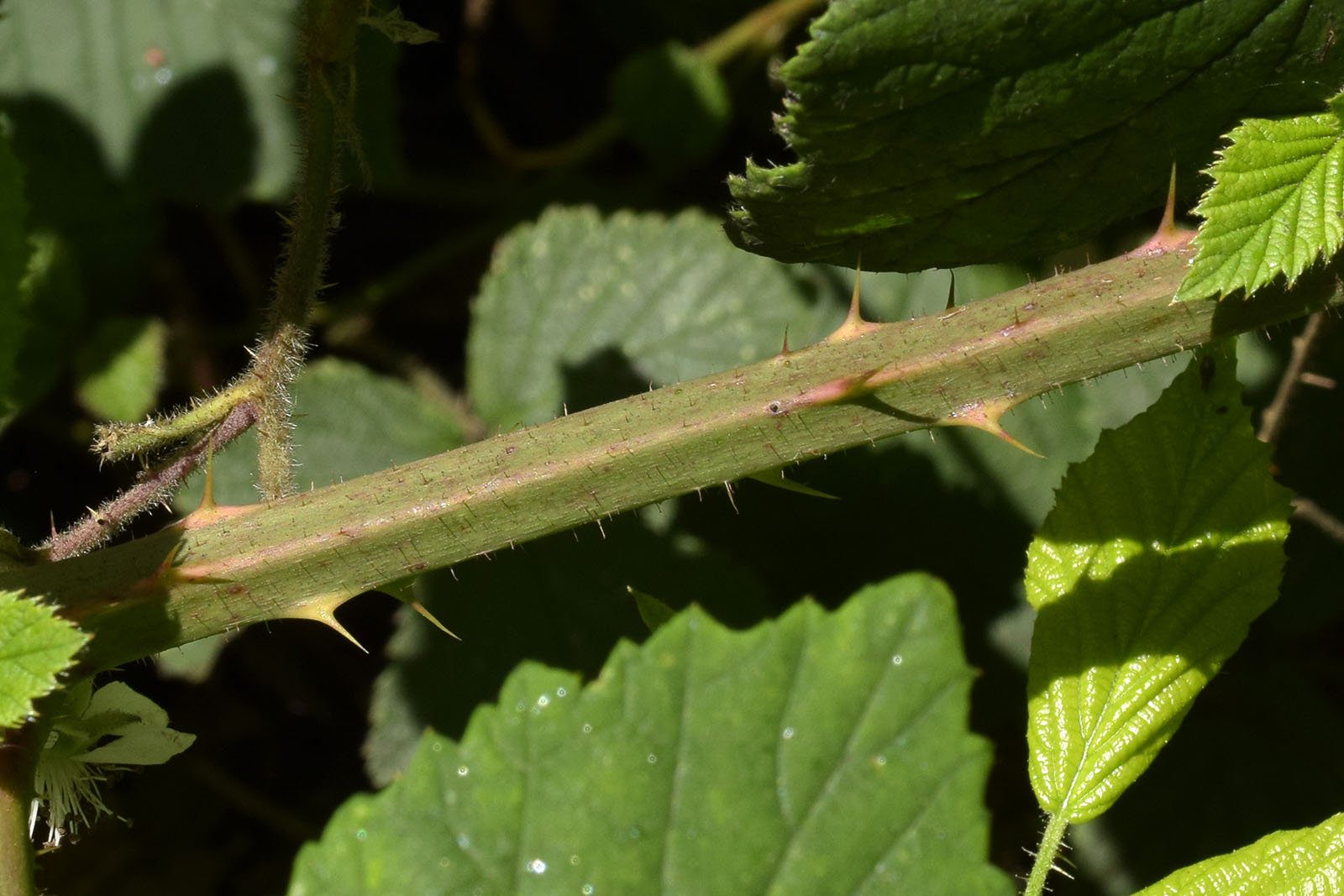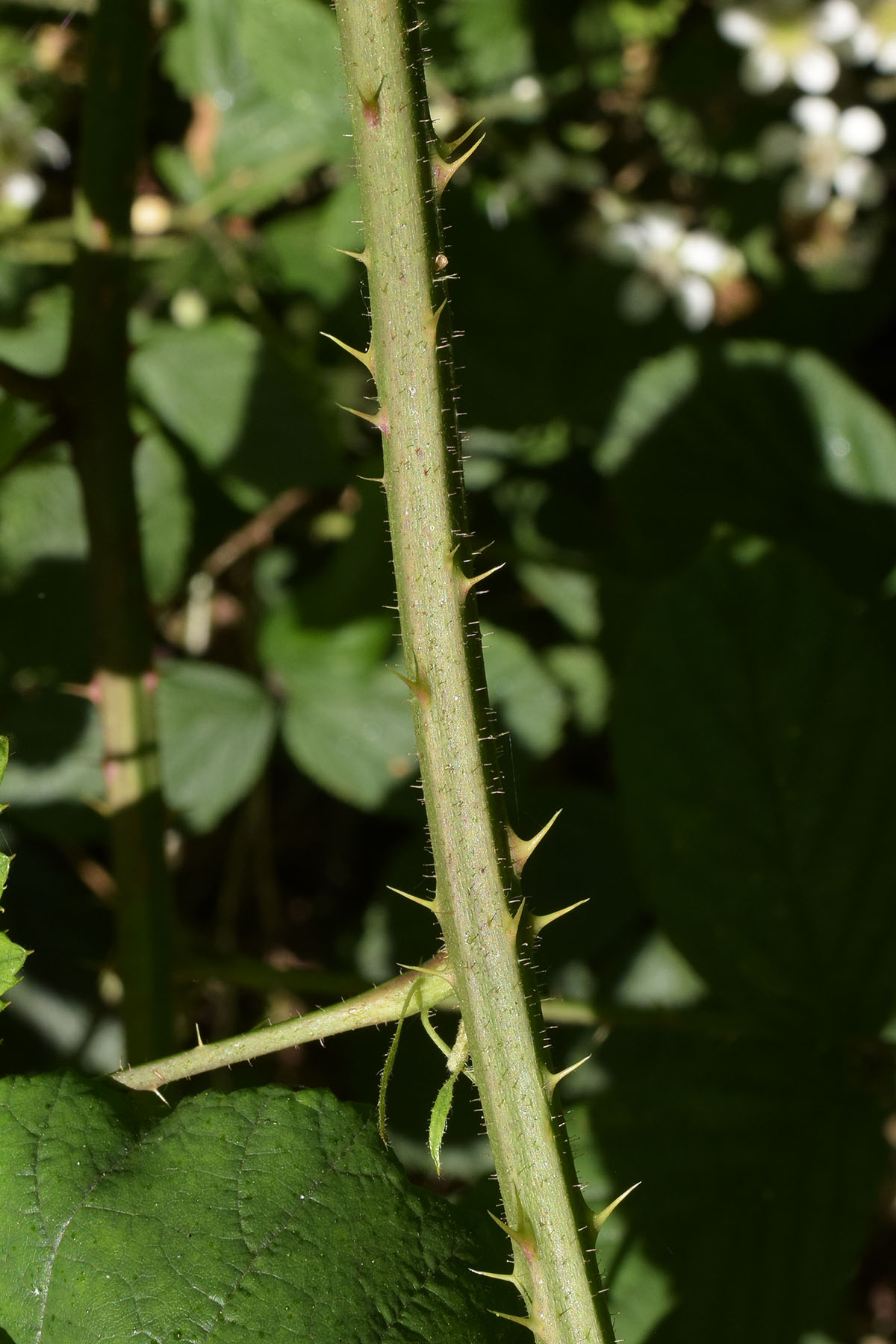
Rubus norvicensis – Series Micantes
back to Alphabetical index · Taxonomic index
A white-flowered bramble with glabrous, glandular stems and a broadly elliptical terminal leaflet. It was found to grow around Norwich, Ipswich and Colchester by Norfolk batologist Alec Bull, who described it as a new species with Edees in 1983. The scientific name means ‘the Norwich bramble’. The typical habitat is described as ‘hedgerows and wood borders’. Subsequently it has been found in Hampshire, South Wales, Guernsey and Ireland by David Allen and others. In Ireland Allen notes that it is ‘patently a recent arrival and spreading fast, most noticeably in southern Ulster...’. It has not yet been found in other parts of England or Scotland, but is probably one to look out for.
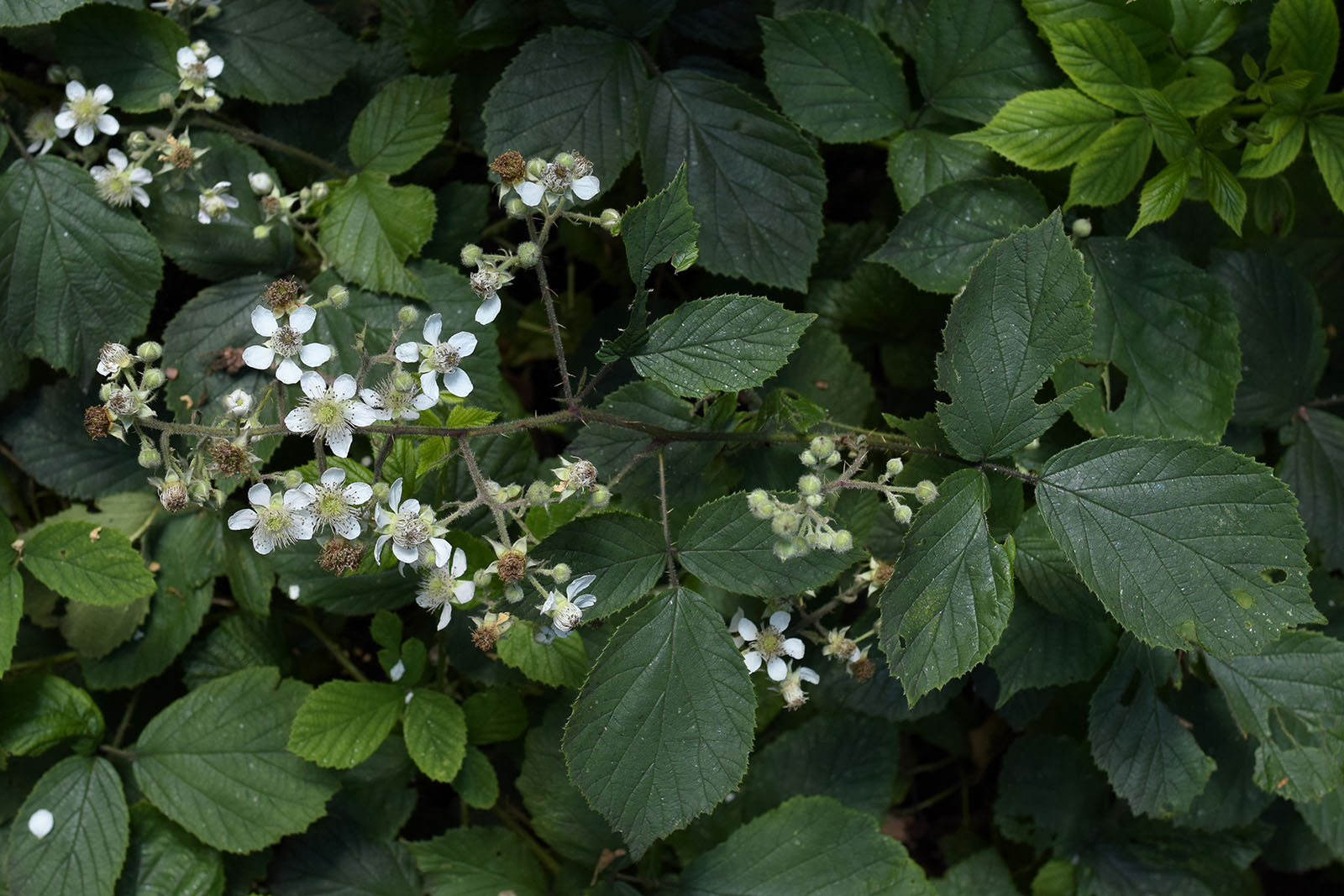
The photographs here were all taken from a single colony at Southampton Common, Hampshire (VC11) (shown below), visited on 1st July in 2007 and 2019. A feature of this species is that the flowering panicles spread out laterally from the bush, so are often horizontal to the ground. Clumps only grow to about a metre in height and the plants may grow through and climb over other vegetation.
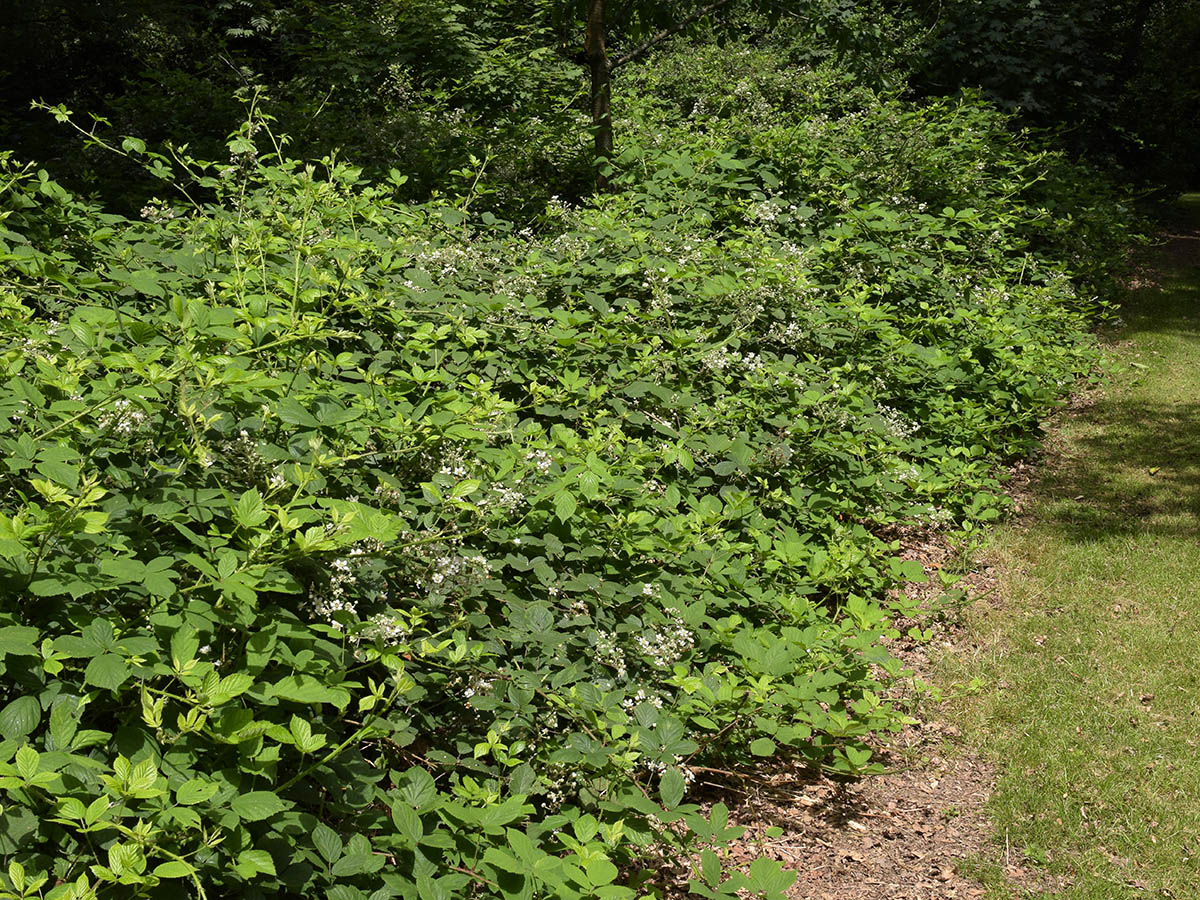
The panicle is well-developed, with a pyramidal non-leafy terminal portion bearing flowers on widely divergent or nearly patent stout branches, with long ascending branches lower down. There is often a simple leaflet or one or more trifoliate leaves at the base of the terminal portion and lower down the panicle. The rachis is dull green to dark purple, slightly flexuose, hairy (especially above) with abundant short-stalked glands and acicles and frequent fine declining or slightly curved prickles which are yellow with a pink base (there may also be a few that are more strongly curved or falcate).
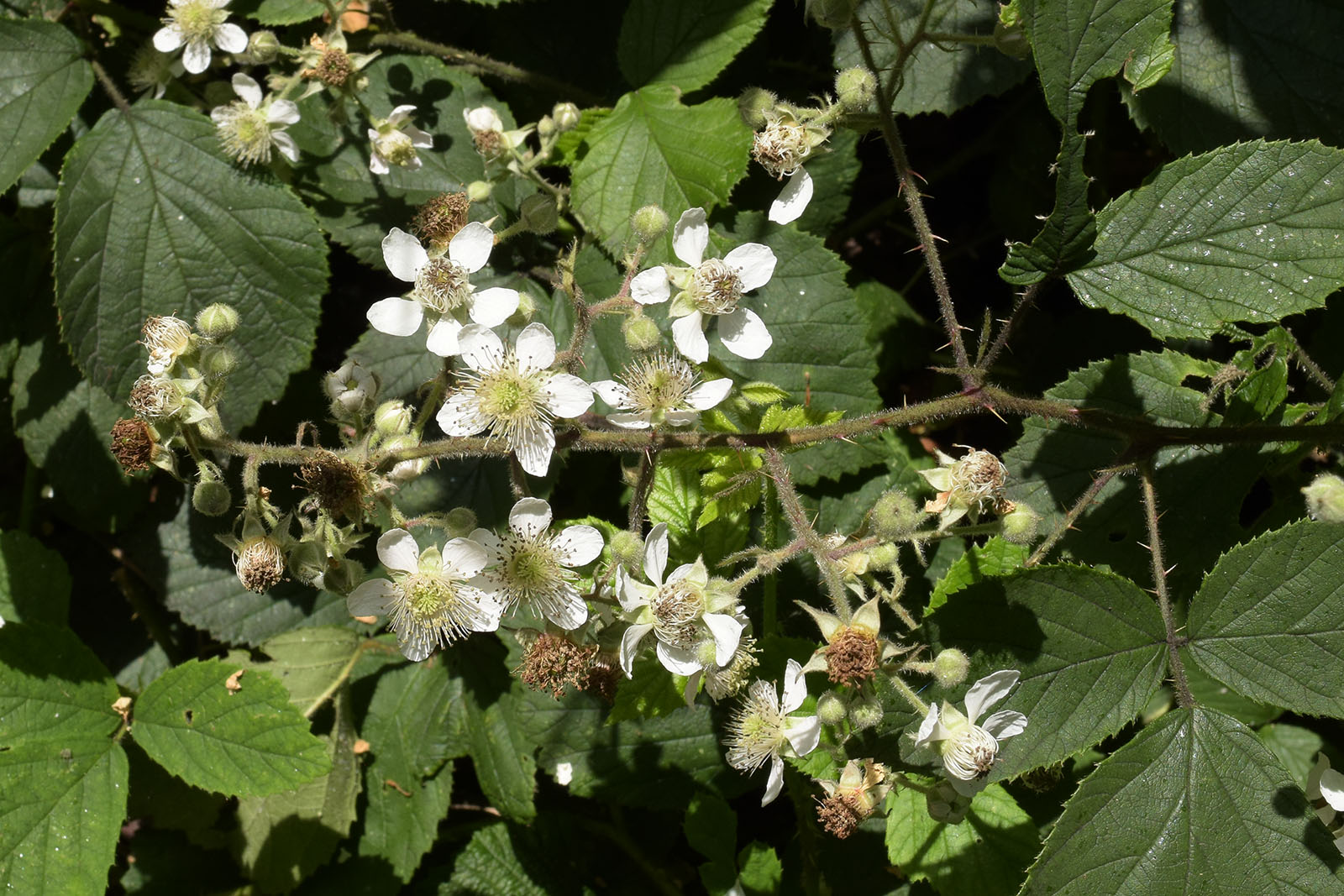
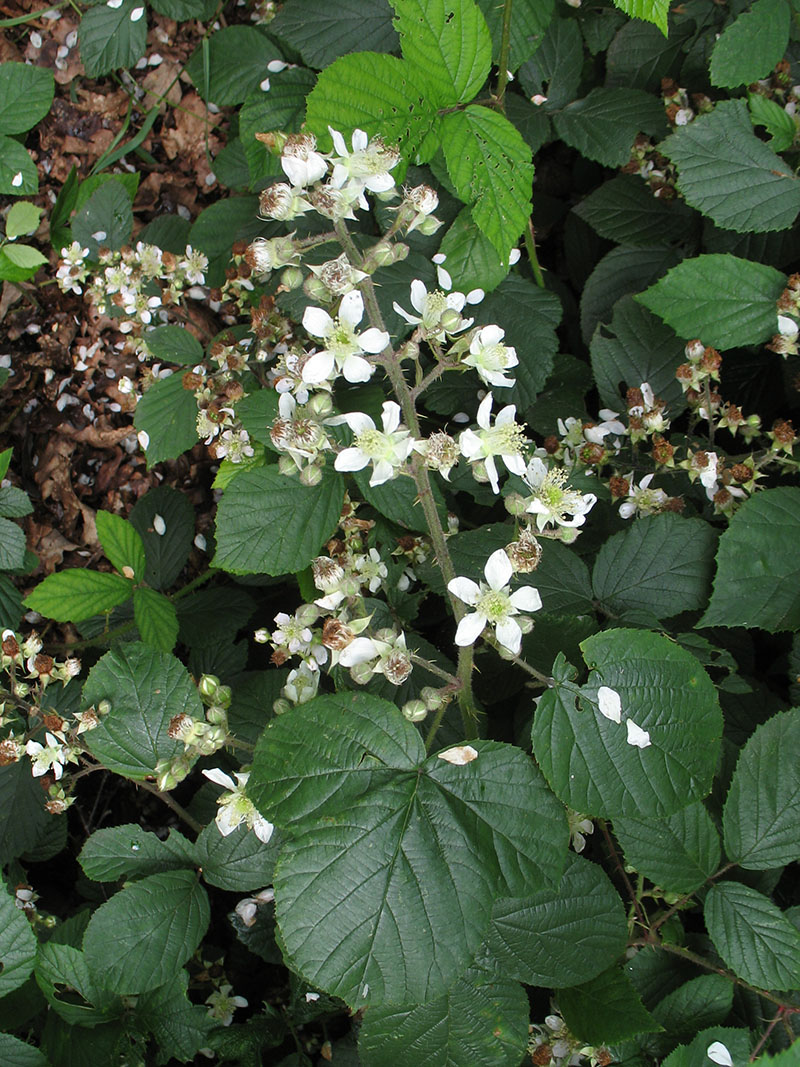
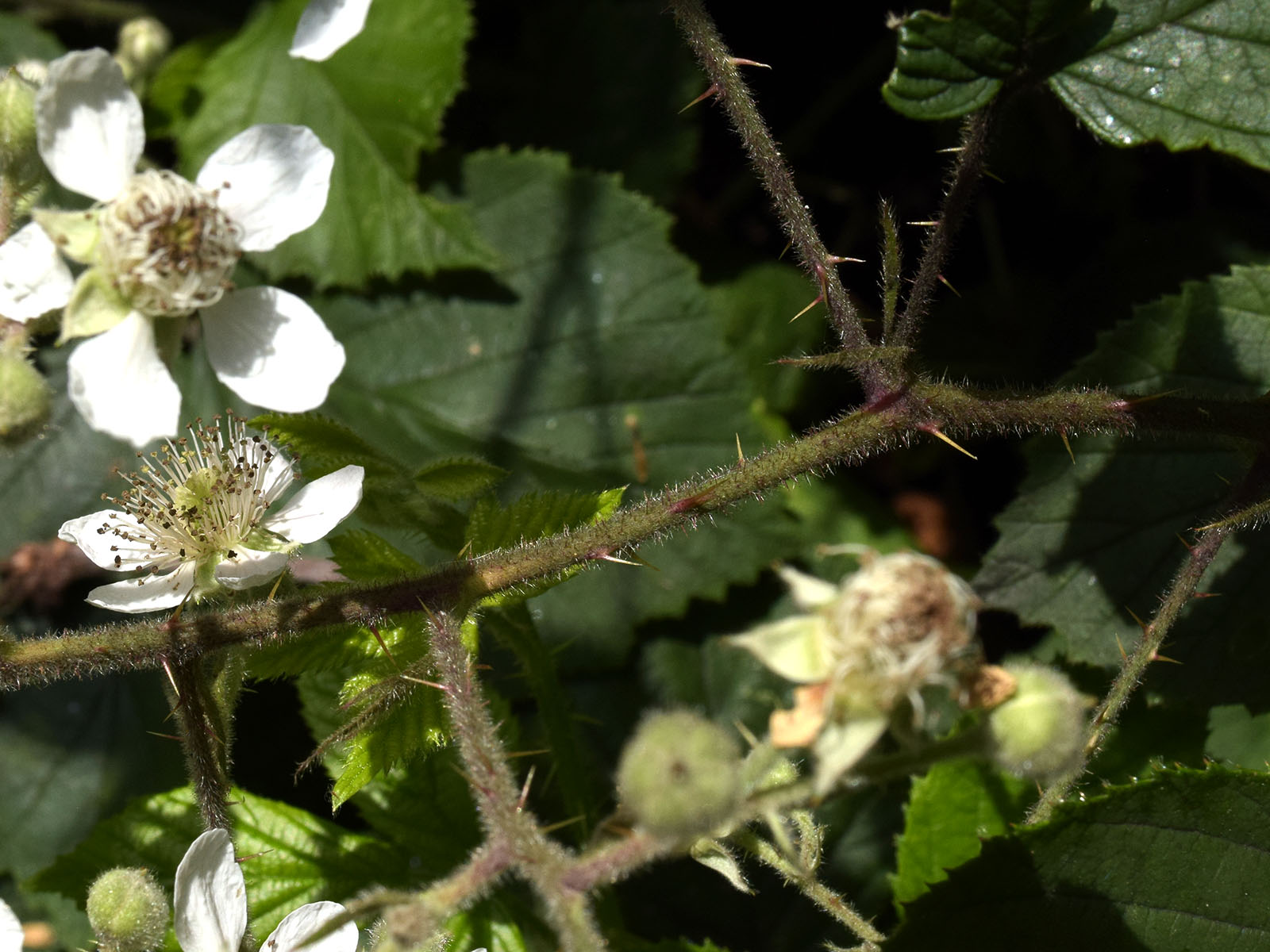
Flowers are about 2.5-3cm in diameter with broadly elliptical white petals, initially pale pink in bud, 10-14 x 5-8mm. They are often slightly notched or irregularly toothed at the tip and are slightly concave. Stamens are longer than the styles and well opened out. Styles are pale yellow, green at the base, carpels glabrous or slightly hairy and receptacle hairy.
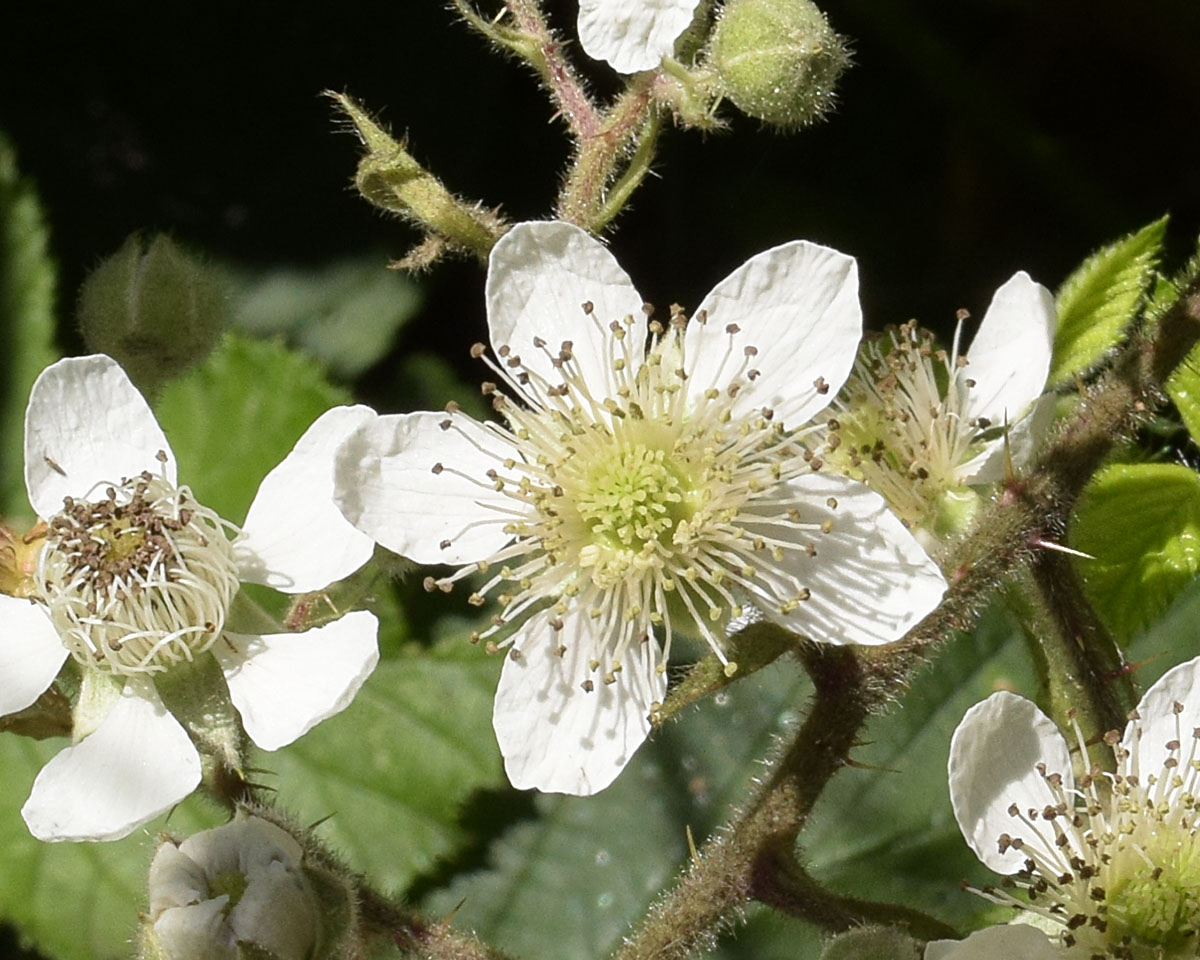
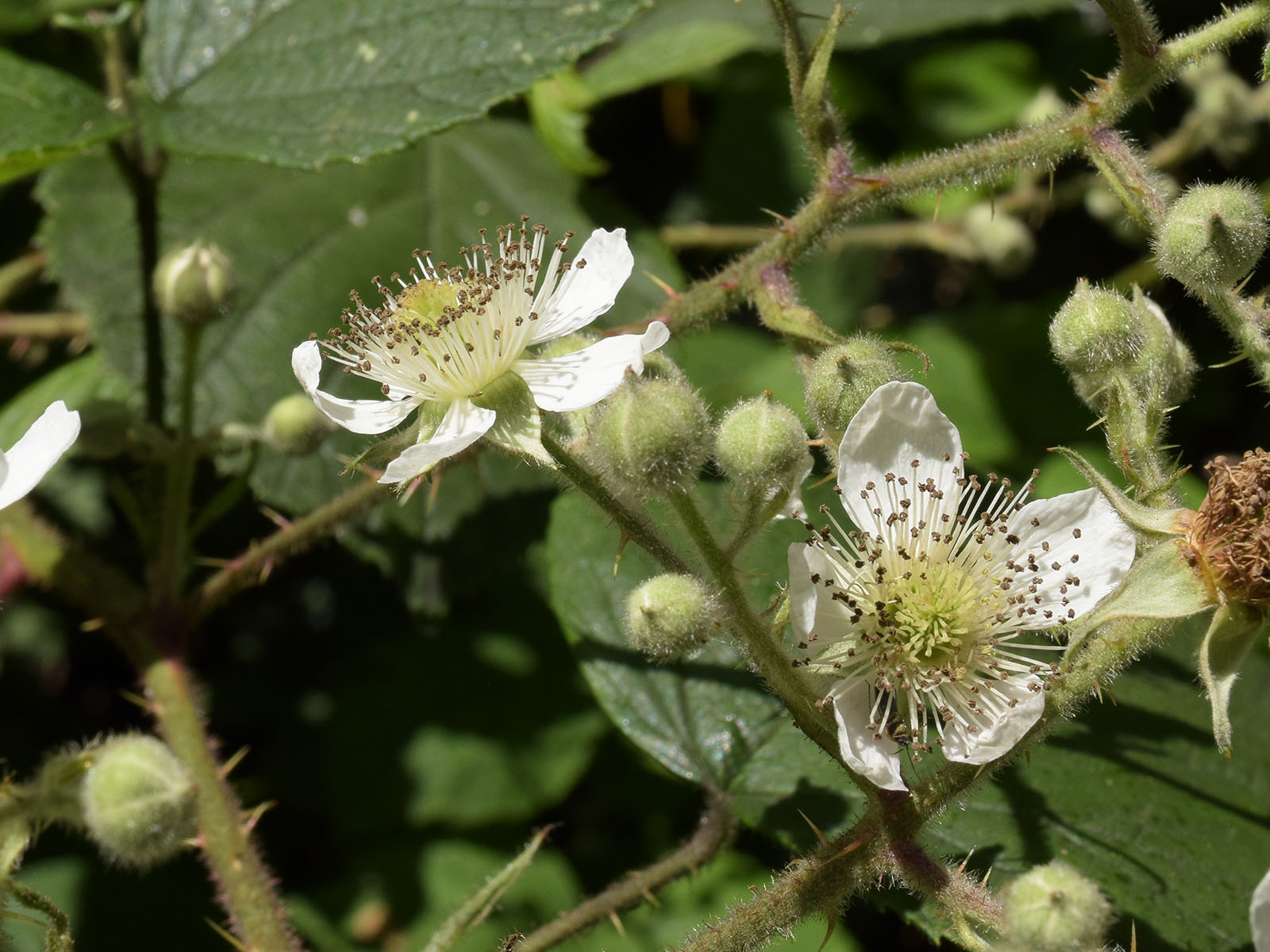
The sepals are silvery-pubescent with some short-stalked glands hidden amongst the hairs. They are loosely reflexed with long, sharp, patent points, sometimes also with narrow leafy tips. These give the flowers a starry appearance when the petals have dropped.
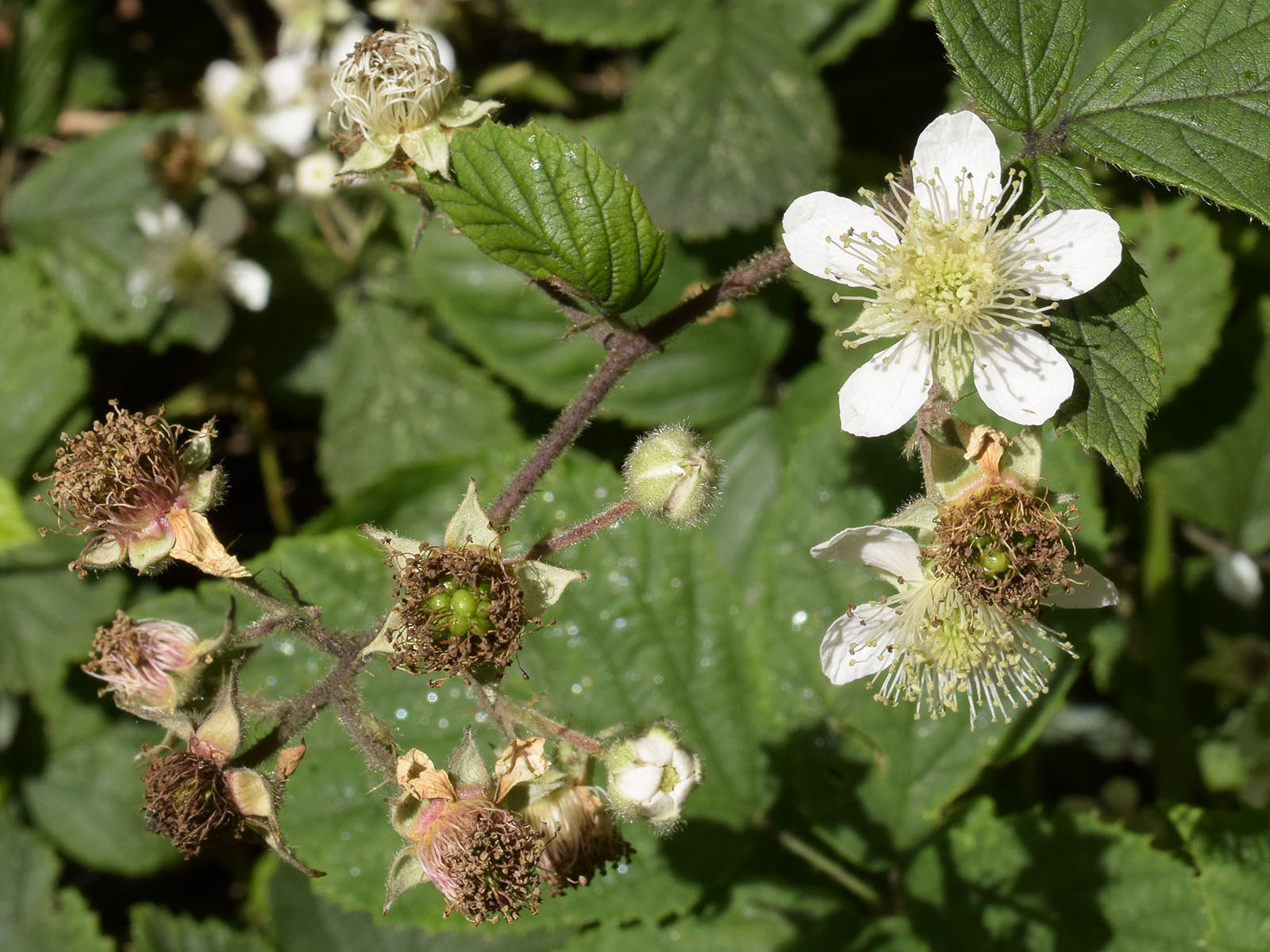
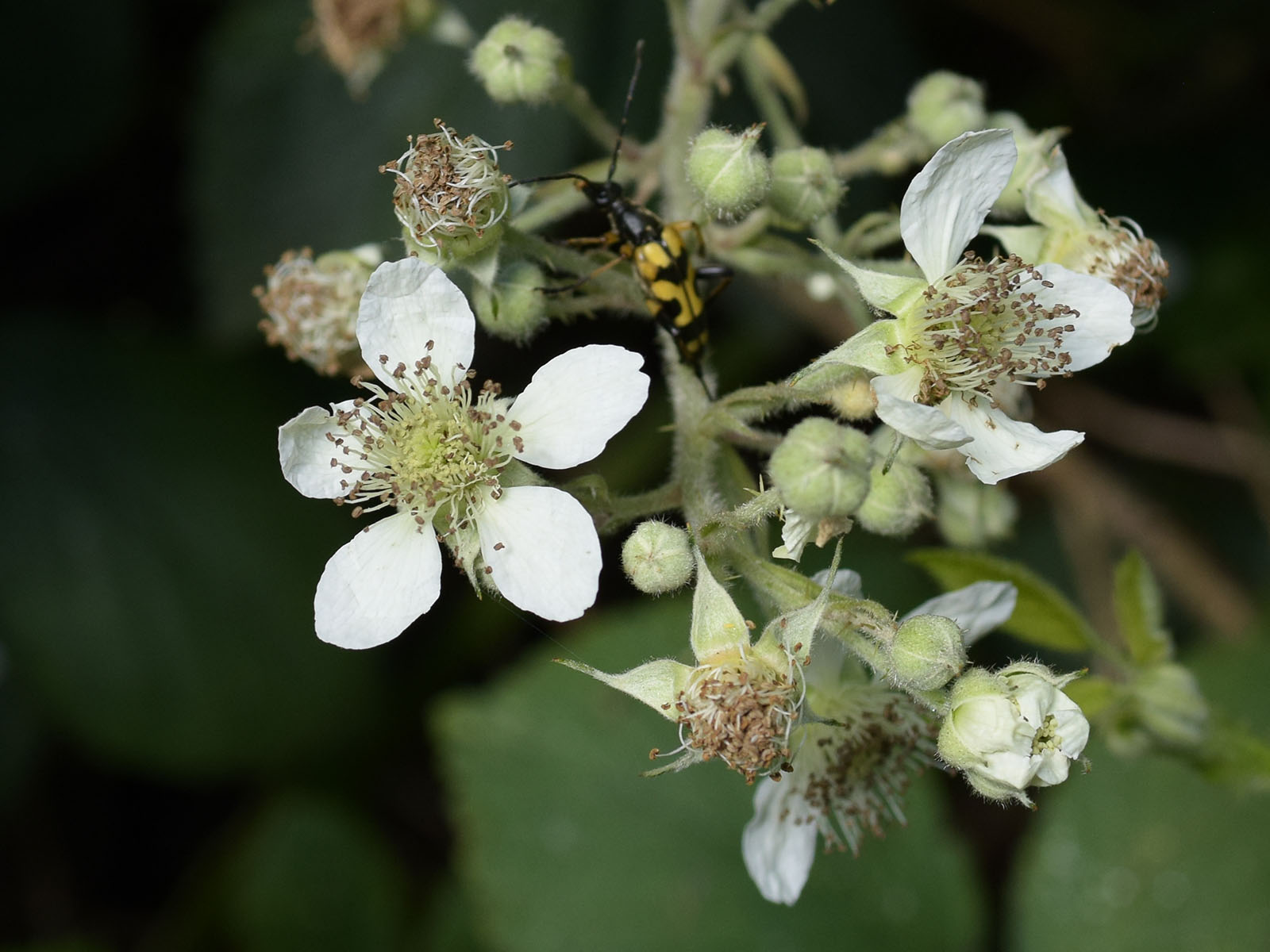
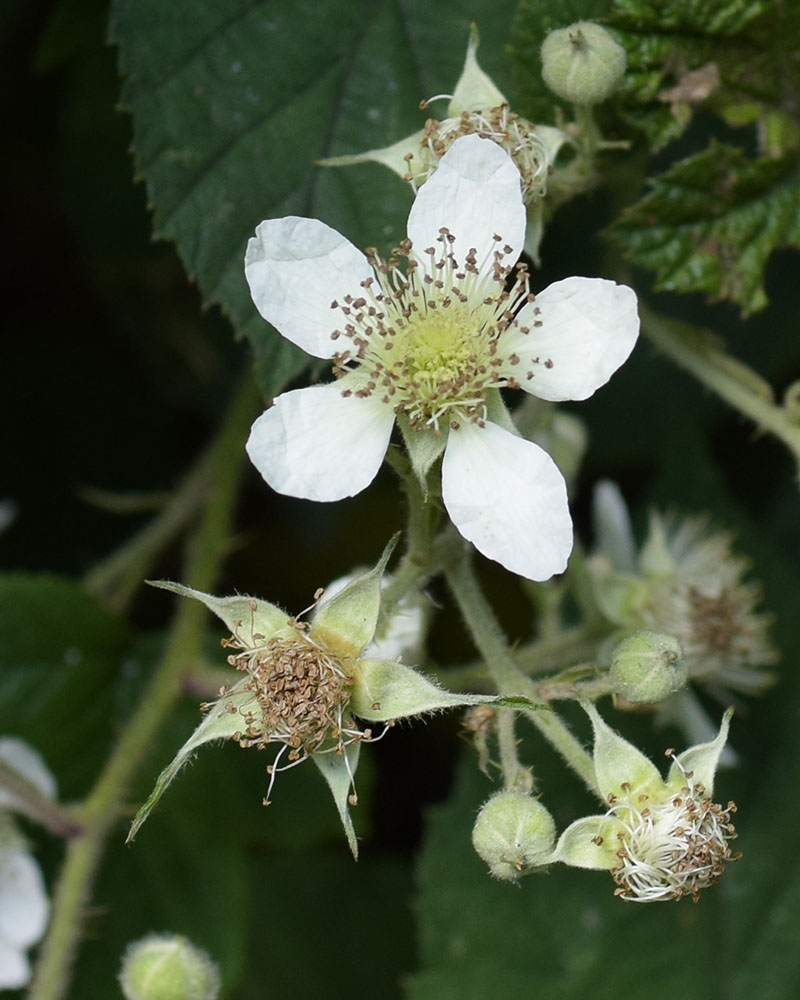
Leaves have 5 or sometimes 3 coarsely serrate, rather thin, yellowish-green to mid green leaflets which are glabrous above. The terminal leaflet is broadly elliptical (or almost obovate) to nearly round, c.(8)9-12(13) x (5)6-8(9)cm, with a short, broad tip and entire or emarginate base, characteristically convex. The basal leaflets are strongly deflexed and may partly overlap.
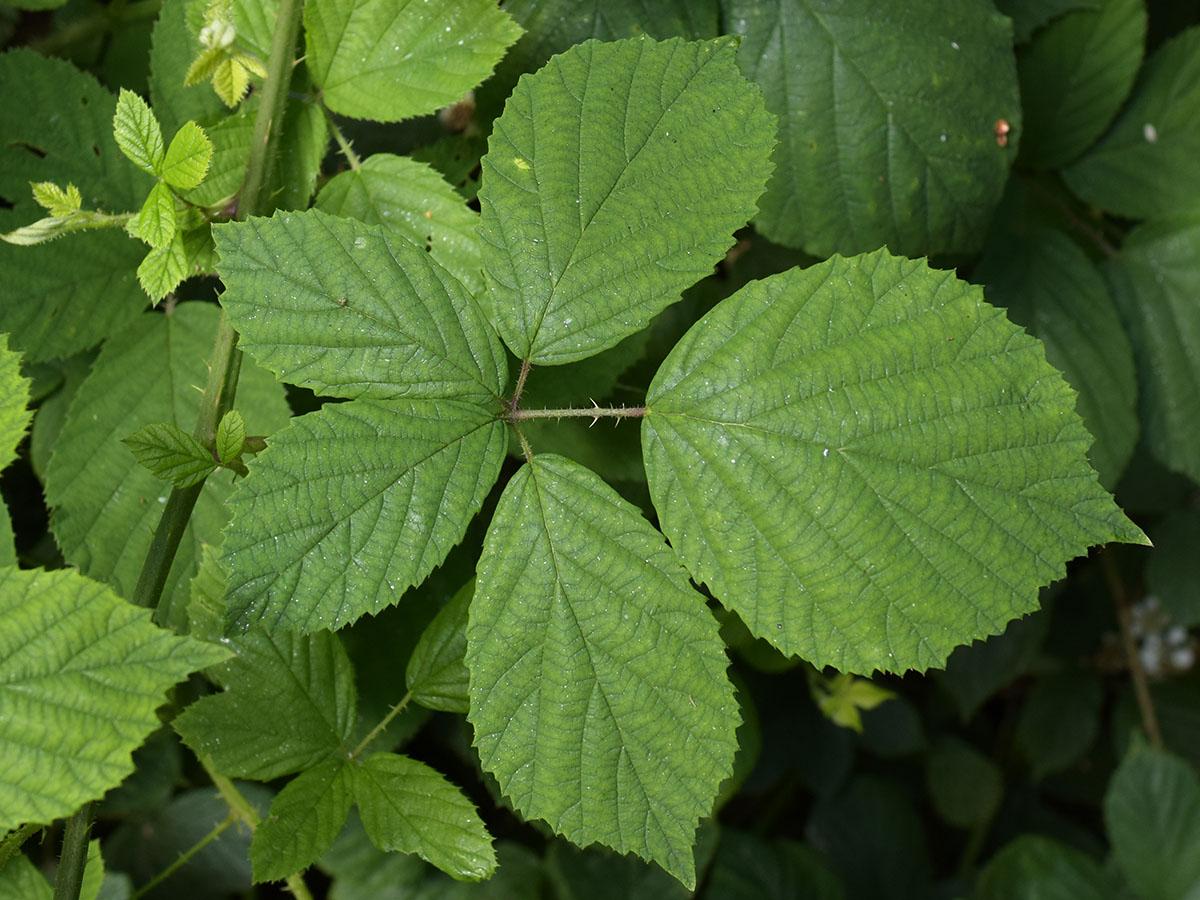
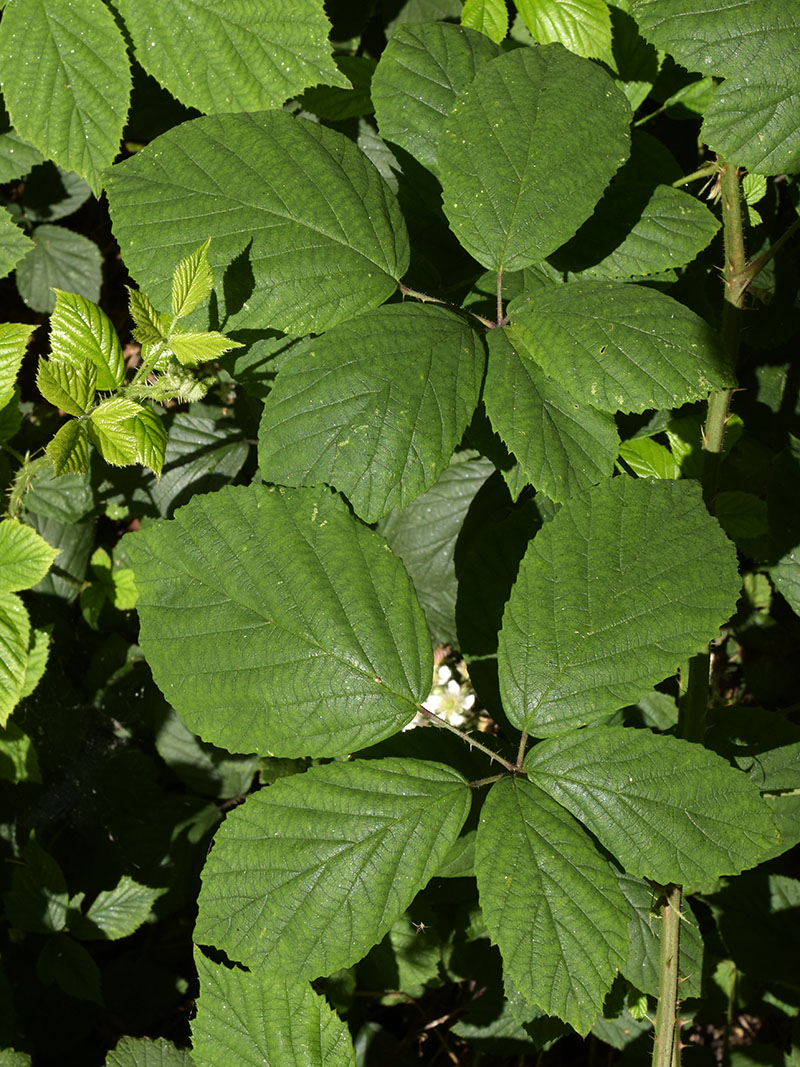
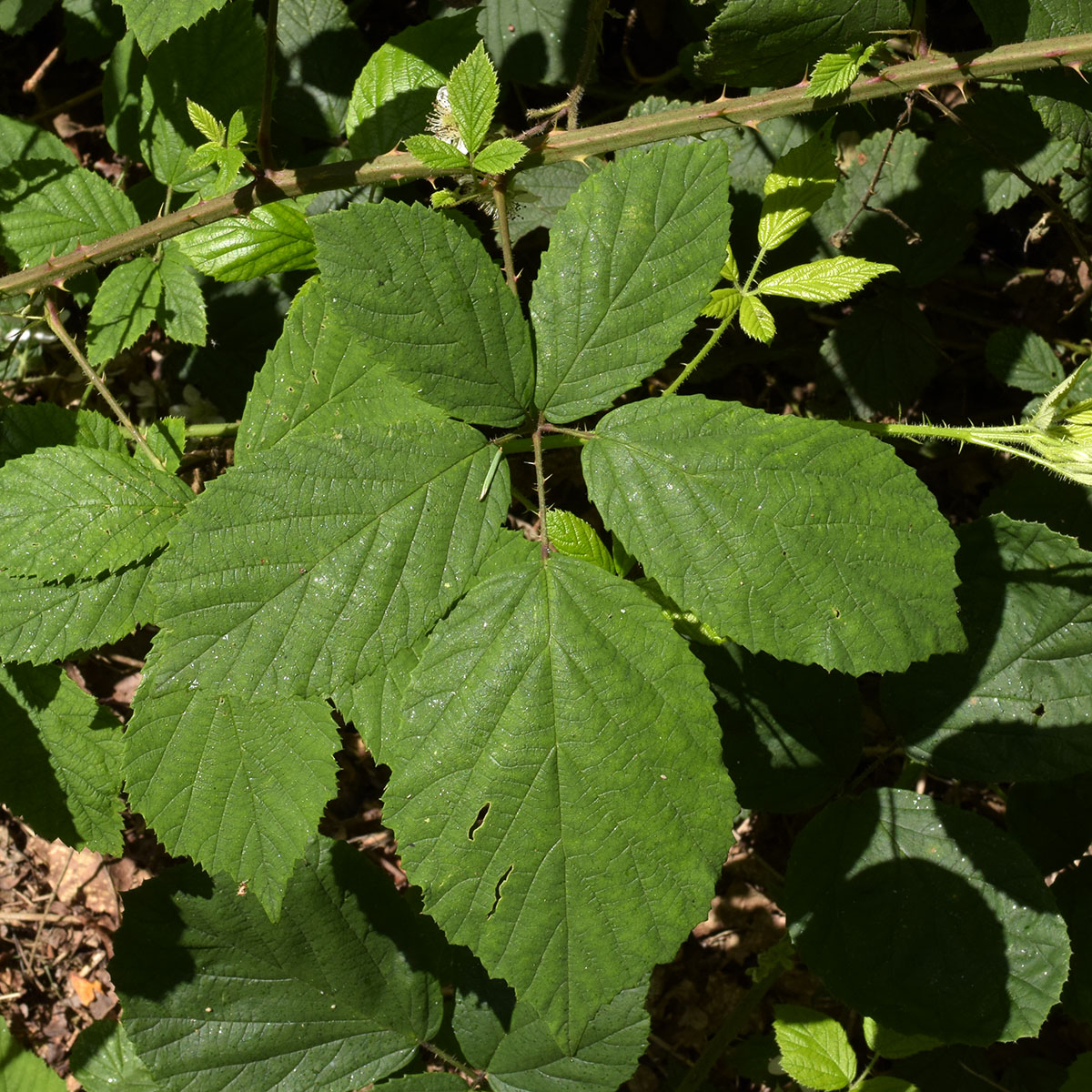
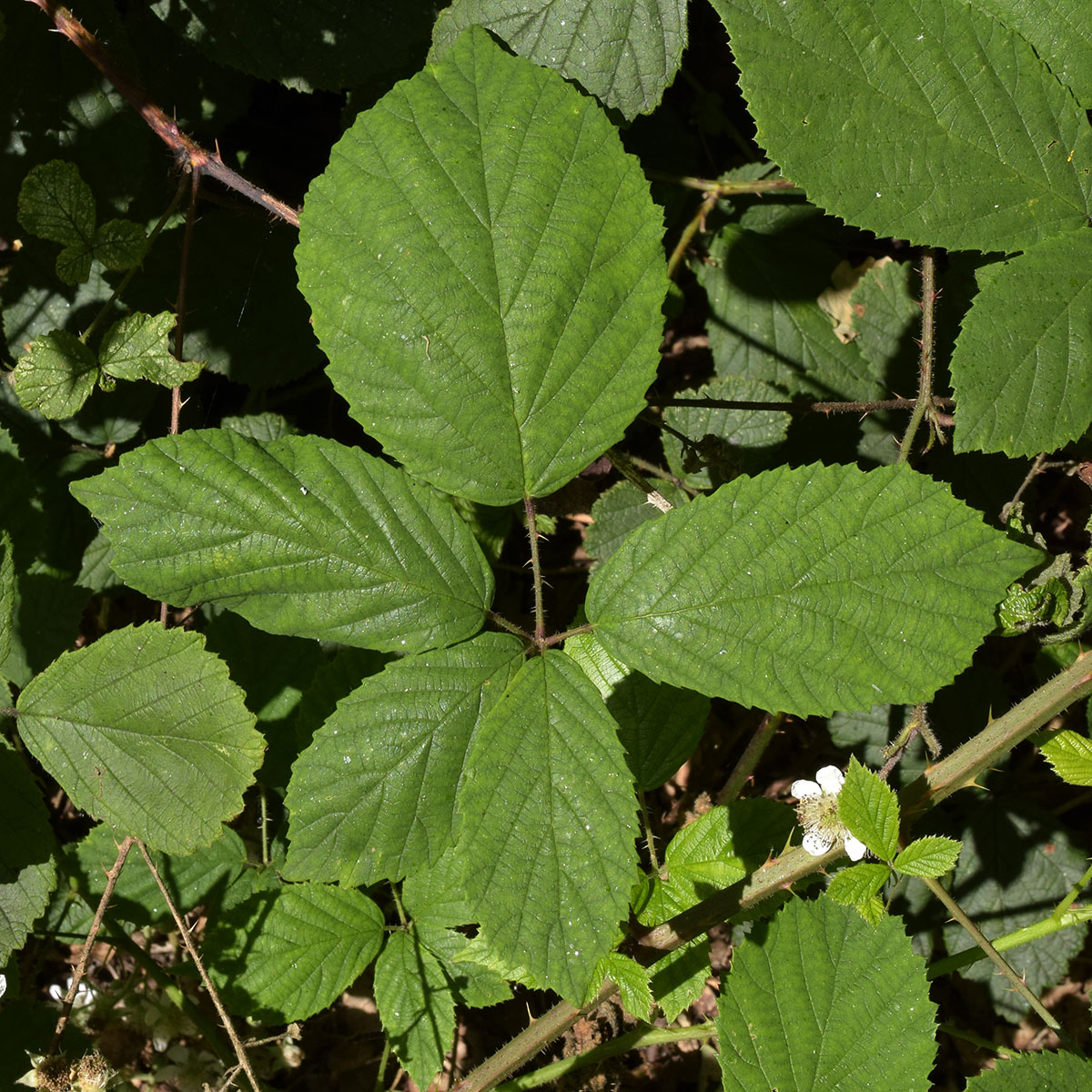
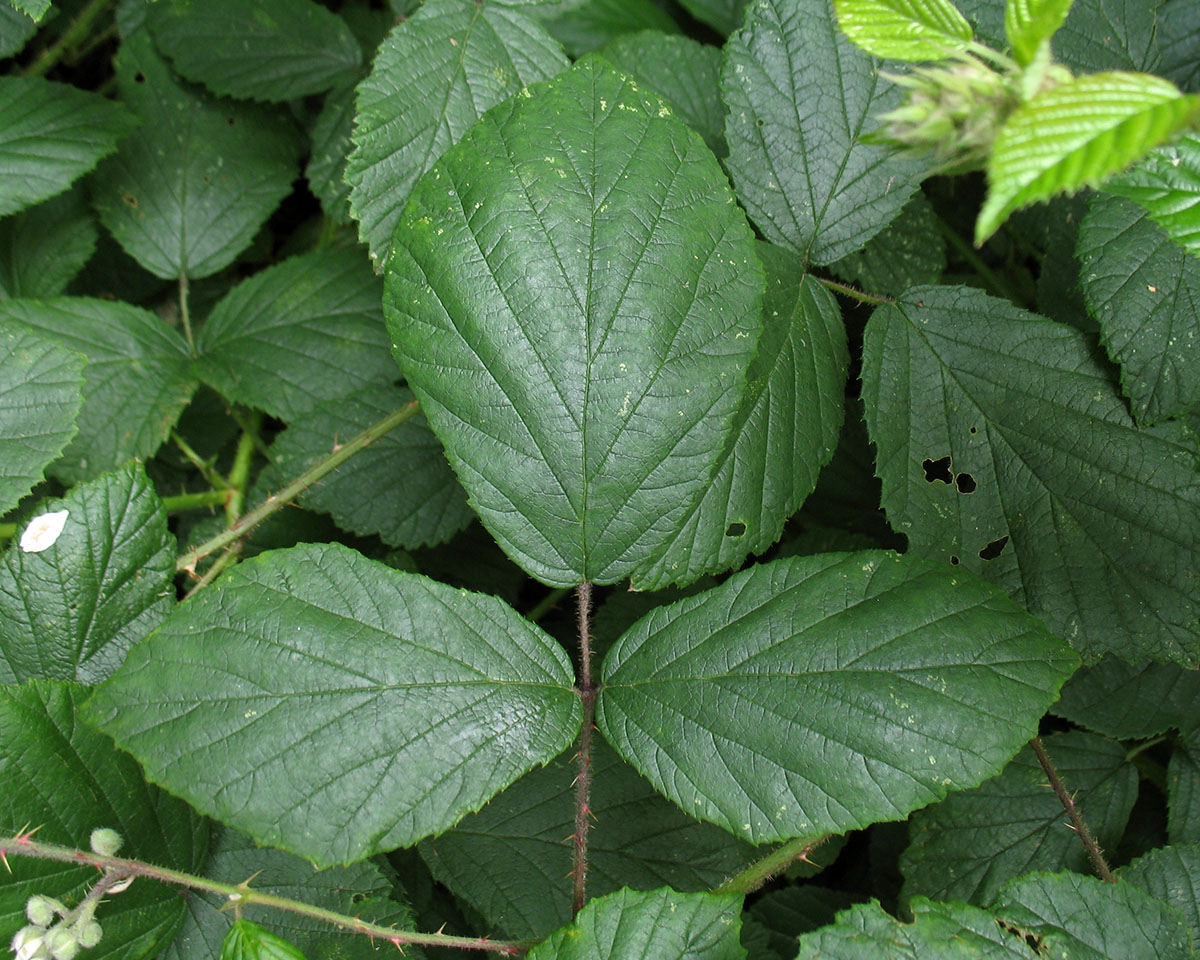
Leaflets are thinly pubescent and pale green below, rarely somewhat grey-felted.

The first-year stem (primocane) is sharply angled with flat sides, typically dull green or brownish and sometimes slightly pruinose, with the angles often reddish-tinged. The main prickes on the angles are about as long as the stem diameter, strongly declining with a long, narrow base. The faces are glabrous or glabrescent with numerous glands, acicles and pricklets varying in length.
